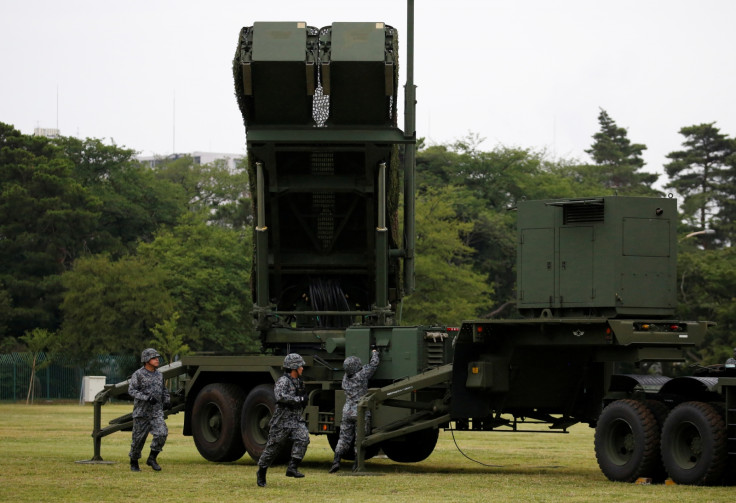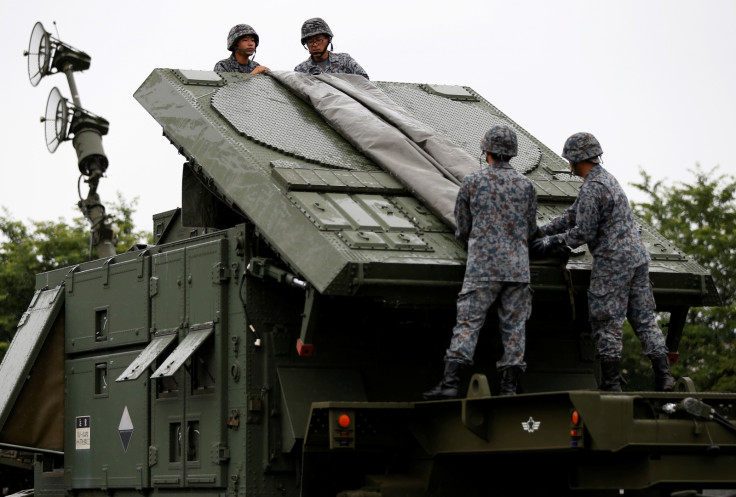Japan holds drills with Patriot missile interceptors to defend itself against belligerent North Korea
The anti-ballistic missile drills took place at the air defence force's Camp Asaka base in the Tokyo metropolitan area.
Japan's Air Self-Defence Force on Wednesday (21 June) held drills with its PAC-3 missile interceptors and other military equipment in view of the increasing number of missile launches by belligerent North Korea in the recent months.
The anti-ballistic missile drill took place at the air defence force's Camp Asaka base in the Tokyo metropolitan area.
The showing of the drill involved nine vehicles, including self-defence personnel setting up and operating a Patriot Advanced Capability-3 (PAC-3) launch pad and its associated military equipment such as a Radar Set and an Antenna Mast Group.
The exercise was unusually open to the public as it is relatively rare that even the media are not invited to most of such military drills.
The PAC-3 unit then prepared for ballistic missile interception and the troops were able to deploy the system as quickly as planned, Major Akinori Hanada, director the drill, was cited as saying by Japan's public broadcaster NHK.
"As North Korea continues its ballistic missile launches, I think this training is necessary for improving the Japan Air Self-Defence Force's ability to deal with ballistic missiles," Reuters cited Hanada as saying.
The major added that his team opened the drill for public viewing this time with a hope that to reduce Japanese nationals' anxiety about North Korea's missile threat, while the air force improves their anti-ballistic missile capabilities.
"By making this training public, we believe it's a way to contribute to the safety and the peace of mind of the public," he said.
The PAC-3 is one of the world's most powerful air defence missile system and Japan often dispatched it at it bases whenever there is a perceived threat from Pyongyang. The anti-missile systems are usually withdrawn shortly after the threat alert is lifted.
Weapons manufacturer Lockheed Martin, which has built the missile interceptor, describes the PAC-3 as a "hit-to-kill" missile, that can "defeat the entire threat: tactical ballistic missiles, cruise missiles and aircraft."

The Far East country has 17 PAC-3 units deployed across the nation and the defence ministry is thought to be planning to hold deployment drills even at the US bases.
The drill came against the backdrop of repeated missile tests by Pyongyang. Under Kim Jong-un's supervision, the reclusive state is reported to have launched 12 ballistic missiles since the start of the year.
The rogue leader has not been hailing his defence forces but also been boasting that the regime is capable of developing an intercontinental ballistic missile capable of striking the US mainland.
With every new missile launch, experts believe that North Korea's tests signified how technologically advanced Pyongyang is.
Japan has been repeatedly condemning North Korea's nuclear and missile programmes, particularly because several short and medium range missile had landed off the of the coast of Japan this year.
The country has been preparing its citizen for any emergency situation should a missile reach Tokyo. Earlier this year, the Shinzo Abe government instructed municipalities to hold evacuation drill, increasing a sense of urgency among the public.

© Copyright IBTimes 2024. All rights reserved.





